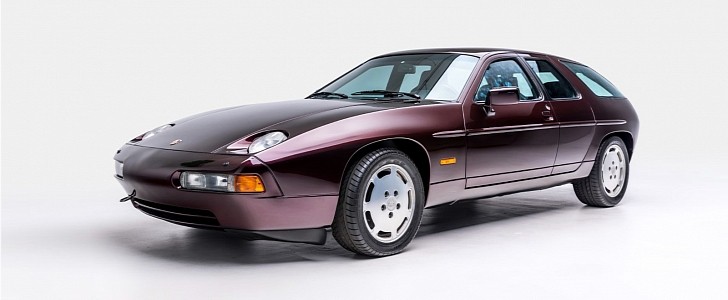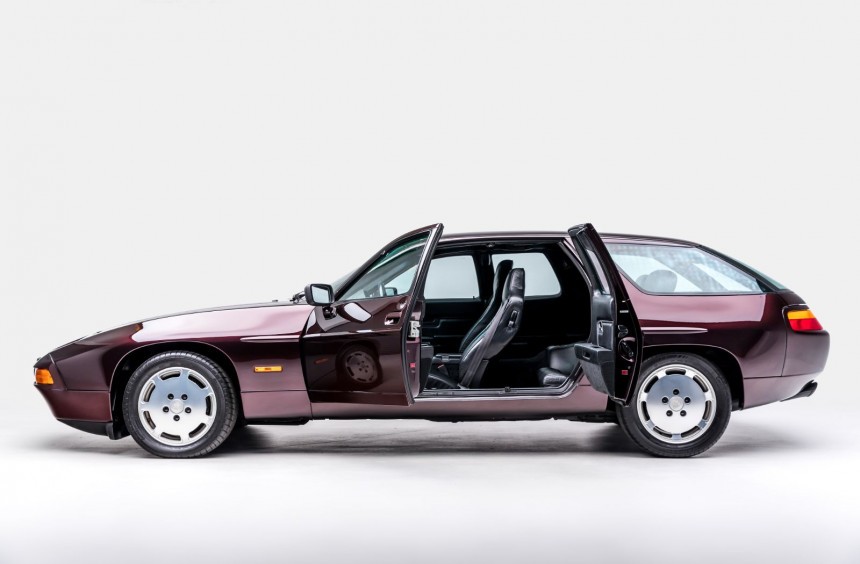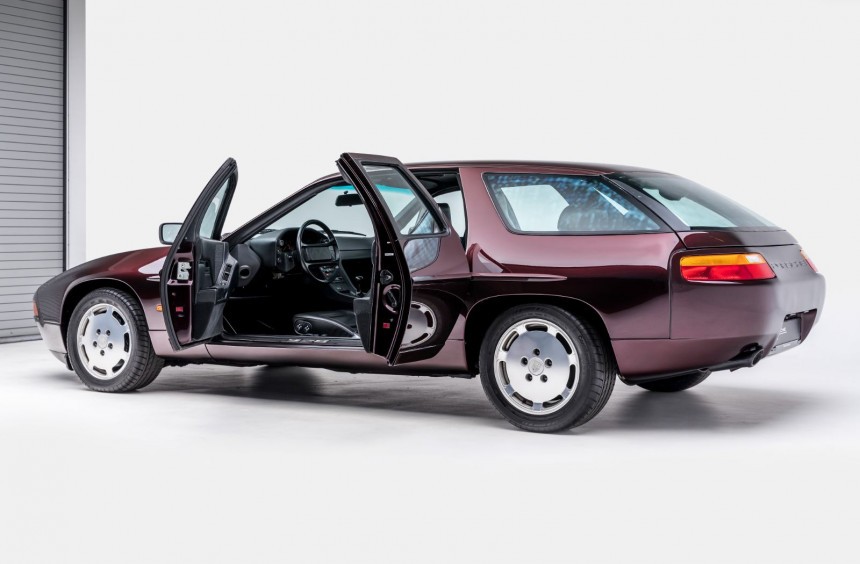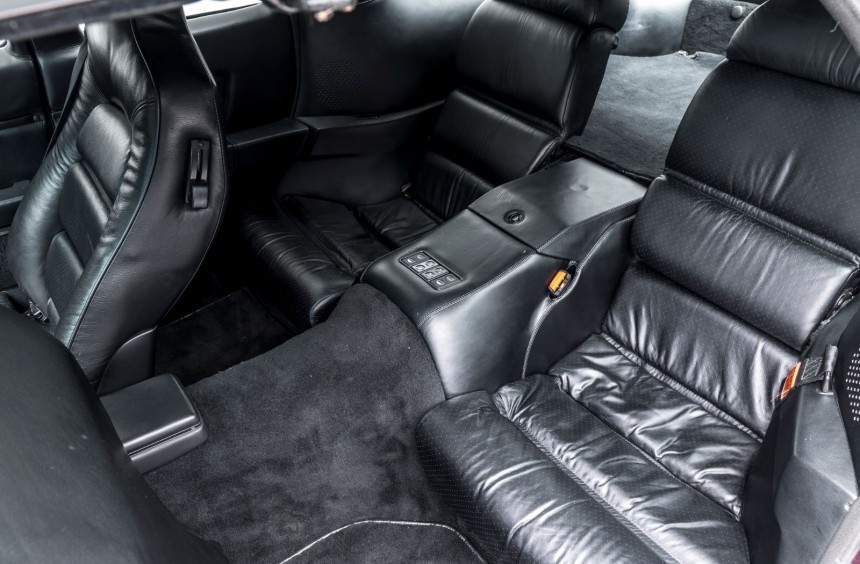The Panamera was conceived as a four-door alternative to the legendary 911. Its origins are generally linked to the 989 concept that was in development between 1988 and 1991. However, a year before the 989 began to take shape, Porsche built a family-friendly, one-off based on the 928 grand tourer.
During the early 1970s, the German manufacturer was developing a new front-engine model that was set to eventually replace the 911. Management was convinced that a bigger, more luxurious grand tourer with a V8 under its hood would be more appealing to the key U.S. market than the aging compact sports car. Called 928, the car entered production in 1977, and although it was safer and more comfortable than its iconic sibling, it wasn’t the sales success that the company had hoped for.
By 1981, Porsche was in murky financial waters, so a new CEO was appointed. His name was Peter Schutz, and not only did he save the 911 from its imminent demise, but also oversaw the revitalization of the brand’s offerings, including the 928.
Schutz would run Porsche until December 1987, when sales began to drop dramatically yet again. Before submitting his resignation, he sanctioned several design studies that aimed to expand the 928 by adding an exotic convertible and a practical four-door to the lineup.
Codenamed, Studie (study) H50, the family-oriented version of the grand tourer’s underpinnings was designed in-house, while body modification and final assembly were handed down to the American Sunroof Company (ASC), the Detroit-based coachbuilders who at the time were developing the turbocharged Buick GNX.
The prototype was based on the newly-introduced Series 4, a revamped variant that came with various aesthetic and mechanical improvements. Its chassis was lengthened to give rear passengers more room, and from the front doors to the rear end, the bodywork was completely redesigned.
The bottom half retained the original lines as well as the taillights, but the top half boasted new windows that transformed the car into a shooting brake wagon decades before such a design became popular.
Of course, the most striking alteration was a pair of rear doors. Similar to those found on the Mazda RX-8 (or an extended cab pickup truck), they were rear-hinged, so they opened suicide-style. However, unlike those on the RX-8, they were bigger and far more practical.
While the exterior looked promising, the interior of the four-door 928 didn’t receive any awe-inspiring features. The vast majority of them came from the coupe, and because no major modifications were made to the drivetrain, the bulky transmission tunnel remained in place. This limited ASC from making the rear area more spacious.
Everything was wrapped in leather to give occupants a premium feel and there was now plenty of leg room in the back, but instead of a conventional backseat that would have seated three, the car featured two rear seats that were similar to those found in the production version. The only major improvement was the ability to electronically adjust the backrest using buttons incorporated into the redesigned console.
After being completed, the prototype was sent to Porsche for assessment. It’s rumored that engineers tweaked the 5.0-liter V8, bumping the output from 316 to 330 hp to compensate for the added weight.
Around 5,000 miles (8,047 km) of developmental testing followed, yielding a major flaw in the design. To make it easier for rear passengers to enter the car, ASC didn’t integrate conventional B pillars between the doors, and this affected the rigidity of the elongated chassis which didn’t meet the required standards. Soon after, Schutz was replaced by Heinz Branitzki at the helm of the company, and the future development of the four-door 928 ceased.
The one-off spent some time in storage but was eventually gifted to Heinz Prechter, the president of ASC. It resurfaced in 2002 at an RM Sotheby’s auction where it sold for $44,000. It is now part of Porsche North America’s collection of rare models and it’s occasionally taken to various exhibits around the country. On one occasion, YouTube user Cars & Travels ! – REMROB got a glimpse of the unicorn, and shared his experience in the short video that you can find below.
The carmaker continued to experiment with four-door cars, and just a year after the H50 project was canceled, a new design study dubbed 989 commenced. Built under the watchful eye of famed German engineer Dr. Ulrich Bez and styled by Harm Lagaay, it was heavily inspired by the 911’s design but retained the front engine placement of the 928. Although this project was also halted in January 1992, it is considered the spiritual predecessor of the mass-produced Panamera.
That being said, the groundwork for shooting-brake Porsche wagon which debuted with the 2017 Panamera Sport Turismo was laid by the H50, a quirky yet interesting concept car that deserves more recognition.
By 1981, Porsche was in murky financial waters, so a new CEO was appointed. His name was Peter Schutz, and not only did he save the 911 from its imminent demise, but also oversaw the revitalization of the brand’s offerings, including the 928.
Schutz would run Porsche until December 1987, when sales began to drop dramatically yet again. Before submitting his resignation, he sanctioned several design studies that aimed to expand the 928 by adding an exotic convertible and a practical four-door to the lineup.
The prototype was based on the newly-introduced Series 4, a revamped variant that came with various aesthetic and mechanical improvements. Its chassis was lengthened to give rear passengers more room, and from the front doors to the rear end, the bodywork was completely redesigned.
The bottom half retained the original lines as well as the taillights, but the top half boasted new windows that transformed the car into a shooting brake wagon decades before such a design became popular.
While the exterior looked promising, the interior of the four-door 928 didn’t receive any awe-inspiring features. The vast majority of them came from the coupe, and because no major modifications were made to the drivetrain, the bulky transmission tunnel remained in place. This limited ASC from making the rear area more spacious.
Everything was wrapped in leather to give occupants a premium feel and there was now plenty of leg room in the back, but instead of a conventional backseat that would have seated three, the car featured two rear seats that were similar to those found in the production version. The only major improvement was the ability to electronically adjust the backrest using buttons incorporated into the redesigned console.
Around 5,000 miles (8,047 km) of developmental testing followed, yielding a major flaw in the design. To make it easier for rear passengers to enter the car, ASC didn’t integrate conventional B pillars between the doors, and this affected the rigidity of the elongated chassis which didn’t meet the required standards. Soon after, Schutz was replaced by Heinz Branitzki at the helm of the company, and the future development of the four-door 928 ceased.
The one-off spent some time in storage but was eventually gifted to Heinz Prechter, the president of ASC. It resurfaced in 2002 at an RM Sotheby’s auction where it sold for $44,000. It is now part of Porsche North America’s collection of rare models and it’s occasionally taken to various exhibits around the country. On one occasion, YouTube user Cars & Travels ! – REMROB got a glimpse of the unicorn, and shared his experience in the short video that you can find below.
The carmaker continued to experiment with four-door cars, and just a year after the H50 project was canceled, a new design study dubbed 989 commenced. Built under the watchful eye of famed German engineer Dr. Ulrich Bez and styled by Harm Lagaay, it was heavily inspired by the 911’s design but retained the front engine placement of the 928. Although this project was also halted in January 1992, it is considered the spiritual predecessor of the mass-produced Panamera.
That being said, the groundwork for shooting-brake Porsche wagon which debuted with the 2017 Panamera Sport Turismo was laid by the H50, a quirky yet interesting concept car that deserves more recognition.

















